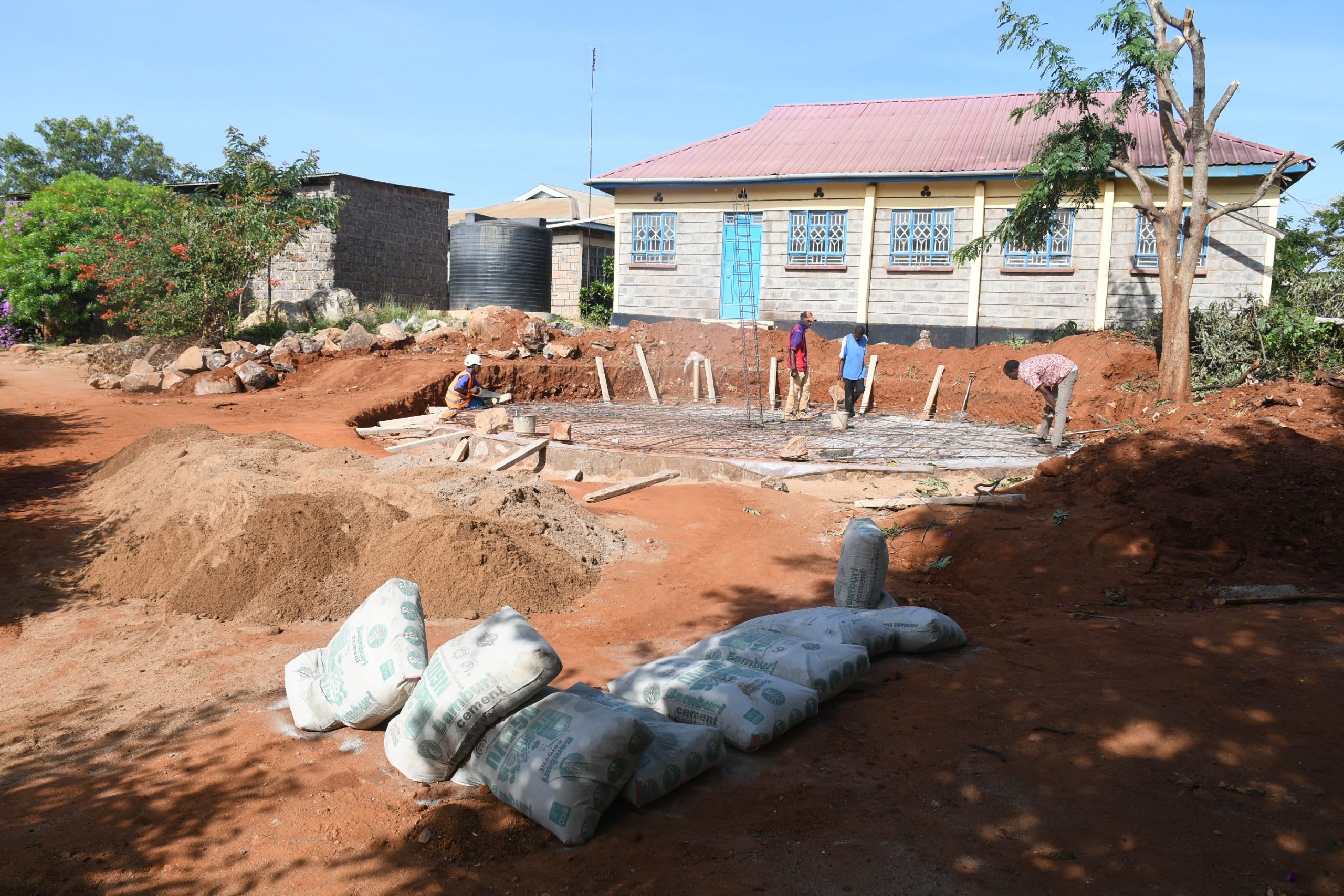The 266 students and 32 AIC Yambyu Girls Secondary School staff go to great lengths to collect water to meet their daily needs. They currently rely on water that collects in small rainwater harvesting tanks but they often run dry. They also have access to a municipal water supply, but it is infrequent and unreliable, leaving them scrounging for enough water to even quench their thirst.

Students in class.
Field Officer Alex Koech said, “Due to the arid climate, the availability of rainwater is inconsistent. Long dry spells mean that the school’s rainwater collection systems are often insufficient to meet daily water needs, leading to frequent water shortages.”
“The municipal water supply is often also unreliable due to infrastructure challenges, leading to delays or intermittent water supply. The school experiences several days without any water supply, disrupting regular activities,” Alex continued.
When the tank runs dry and the municipal water is rationed, the only other option is to pay for a water vendor to haul water to the school. But this is a costly solution for their finances and health, as the water can come from questionable sources.
Depending on a water bowser (water vendor) to transport water to the school is costly, especially considering fuel prices, long distances, and the availability of water tankers in remote regions. This puts a financial strain on the school’s budget, often diverting funds from other essential needs. The school is at the mercy of external sources for a consistent water supply. Disruptions in bowser (water vendor) services or municipal supply shortages due to droughts or infrastructure failures significantly impact daily operations, including cooking, sanitation, and hygiene practices,” shared Alex.
47-year-old Magdalene Mulwa, a teacher at the school, shared her view of the problems that result from their current water crisis.

Teacher Magdalene Mulwa.
“The existing water challenges still pose significant problems that affect the day-to-day operations of the school and the overall well-being of students and staff. These problems include insufficient water supply, which disrupts essential daily activities such as cooking, cleaning, laundry, and personal hygiene for students. [Also], constant water shortages cause stress and anxiety for students, who worry about their ability to meet basic hygiene needs or endure uncomfortable living conditions, and students spend most of their time fetching water from nearby sources or waiting in long queues when supplies are limited,” she said.
Boarding students rely exclusively on the school to meet their needs. They can’t bring water from home, so they have no other solution when the school runs out of water. This happens for days at a time, making prioritizing education almost impossible.
“Cooking and meal preparation become difficult without adequate water, leading to irregular meal schedules or reduced food quality. This affects students’ nutrition, which is crucial for their concentration and energy levels. Boarding students who live on the school premises are especially affected since they rely on the school’s water supply for bathing, laundry, and drinking water. The inconvenience of having to queue for long periods to access limited water or dealing with insufficient sanitary conditions is also frustrating and demotivating for students,” Teacher Mulwa continued.
Teachers are at a loss, and students are thirsty and overwhelmed. The AIC Yambyu Girls Secondary School needs a solution. Installing a 104,000-liter rainwater harvesting tank will ensure they can collect enough water during the rainy season to meet their needs year-round.

Students waiting to collect water.
“With sufficient, clean drinking water, students are less likely to experience dehydration, which is known to impair cognitive function. Proper hydration enhances students’ focus, memory, and overall mental alertness, enabling them to concentrate better during lessons and absorb information more effectively. When students have access to clean water for washing, bathing, and maintaining personal hygiene, they are more comfortable, confident, and less distracted by personal discomforts. This contributes to a positive self-image and better engagement in school activities,” teacher Mulwa concluded.
Steps Toward a Solution
Our technical experts worked with the local community to identify the most effective solution to their water crisis. Together, they decided to construct a rainwater harvesting system.
Rainwater Harvesting System
A rainwater collection system consists of gutters that channel rainwater effectively into large holding tanks. Attached to buildings with clean, suitable roofing, these systems are sized according to the population and rainfall patterns. Water can be stored for months, allowing for easy treatment and access. Learn more here!
Handwashing Stations
Alongside each water source, we install two gravity-fed handwashing stations, enabling everyone at the school to wash their hands. Handwashing is crucial for preventing water-related illnesses within the school and community. Student “health clubs” maintain the stations, fill them with water, and supply them with soap, which we often teach them how to make.
School Education & Ownership
Hygiene and sanitation training are integral to our water projects. Training is tailored to each school's specific needs and includes key topics such as proper water handling, improved hygiene practices, disease transmission prevention, and care of the new water point.
To ensure a lasting impact, we support forming a student health club composed of elected student representatives and a teacher. These clubs promote hygiene practices schoolwide and keep handwashing stations well-stocked. This student-led model encourages a sense of ownership and responsibility.
Safe water and improved hygiene habits foster a healthier future for the entire school.

 Rainwater Catchment
Rainwater Catchment
 Rehabilitation Project
Rehabilitation Project



















